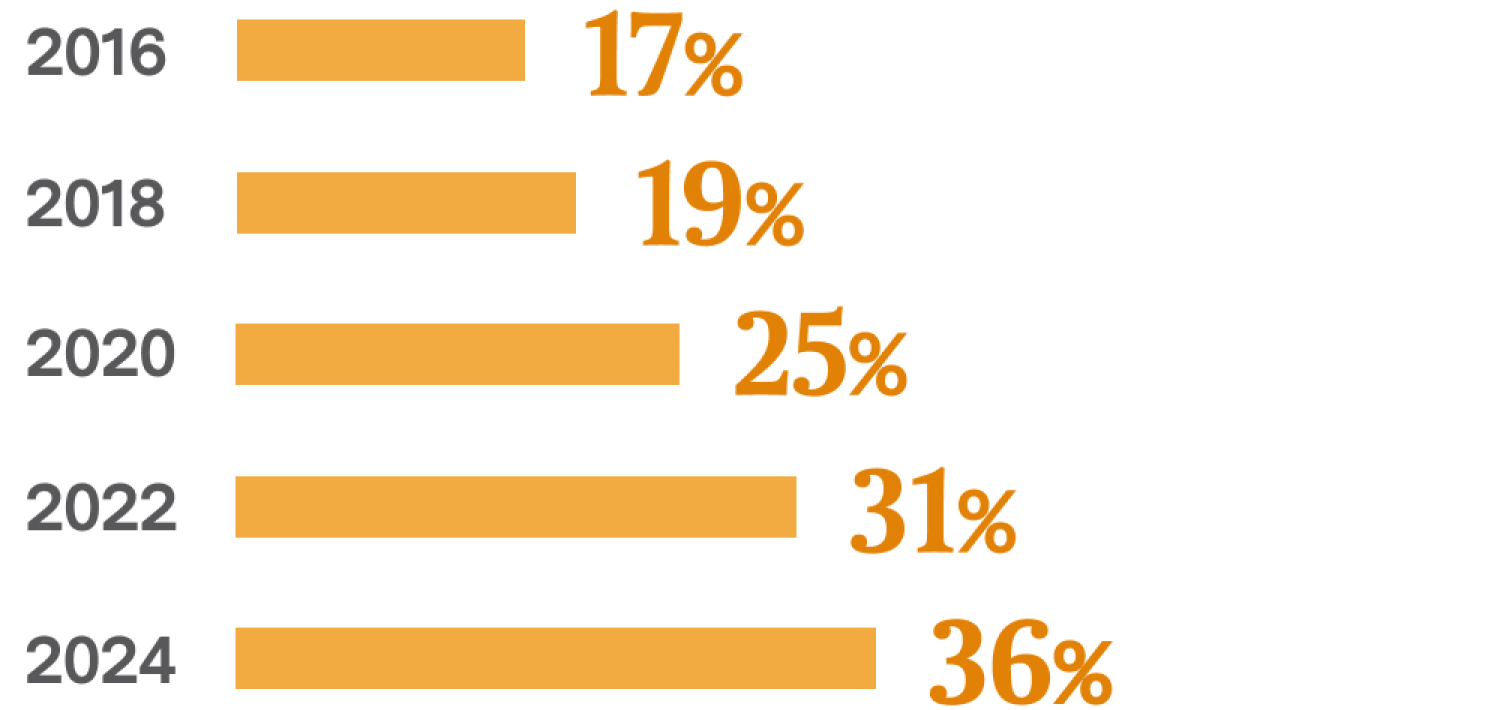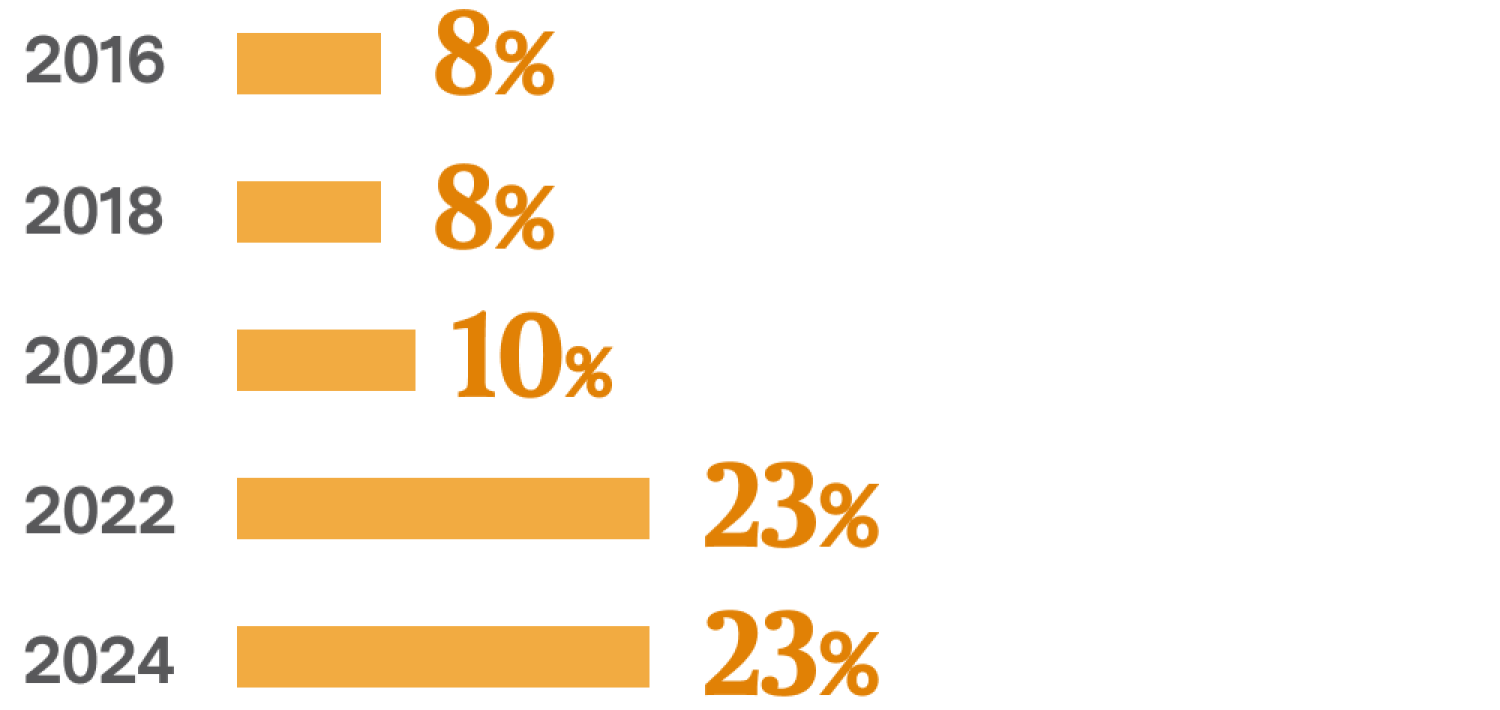August marks Women’s Month in South Africa, a time to celebrate the achievements and contributions of women across all spheres of society.
August marks Women’s Month in South Africa, a time to celebrate the achievements and contributions of women across all spheres of society.
As part of our annual review of board-level diversity across JSE Top 40 companies, we are reflecting about the state of women in governance. In particular, we spent some time exploring the lived experiences of women navigating board leadership.
Fortunately, female directors are no longer a rarity in South African boardrooms; they’re becoming part of the norm. But this rising representation hasn’t yet translated to equal leadership opportunities. While we see encouraging gains in female representation across JSE Top 40 boards and in committee leadership roles, women are still lagging when it comes to board chair appointments.
This gap led us to ask: What is driving this divergence, and what practical steps can help close it? Throughout this article, we explore these questions and offer insights to guide change.
Female Board Leadership: The Numbers Tell a Story
Female Board Leadership: The Numbers Tell a Story
Over the past decade, the representation of women on the boards of JSE Top 40 listed companies has more than doubled, from a modest 17% in 2016 to over 36% by 2024. This sharp rise marks a meaningful shift in South Africa’s corporate governance dynamics.


This growth is not only visible in board membership; women are increasingly stepping into committee chair positions, growing from just 18% in 2016 to over 46% in 2024—a clear signal that they’re being entrusted with strategic oversight responsibilities. Notably, female directors are most often leading committees traditionally associated with governance, risk, and sustainability, such as:
- Audit and Risk Committees
- Social and Ethics Committees
- Remuneration Committees


These roles are critical to board accountability and function, and women’s growing presence reflects both capability and trust. However, it also raises questions about whether women are being channelled into specific leadership tracks.
The Chair Gap
The Chair Gap
Despite the positive momentum in board and committee representation, the data reveals: women are still underrepresented among board chairs—the pinnacle of board leadership. While there has been growth, from 8% in 2026 to 23% in 2024, it has not kept pace with broader trends in female leadership.


This divergence suggests that while women are increasingly present and active in governance, the final leap to overarching board leadership remains elusive. To better understand this, we spoke with female board members, chairs, and aspiring chairs to explore their experiences and insights. Their perspectives were enlightening.
The Journey to the Board
The Journey to the Board
“Getting that first board position is the toughest.”
Historically, the process was opaque, with board appointments happening behind closed doors. Today, while opportunities are more openly advertised it remains an incredibly competitive space, and the path to board leadership is rarely linear. For many female leaders, it began with a single opportunity. “Someone has to take a chance on you, especially at the listed level,” as we have heard. Networking is seen as a critical factor. Being known personally—having a track record and allies who advocate for you—often made the difference for the female directors we spoke to. Once on one board, many found themselves recommended for others, a domino effect driven by reputation and relationships.
Some entered organisations actively seeking female leadership with specialist expertise in fields like finance, audit, remuneration and sustainability. Others felt like their appointments were the result of regulations, inadvertently leading to “tick-box” placements. In some cases, this led to placing individuals on boards without sufficient experience, undermining genuine development and creating barriers for those truly ready to lead. It also meant that women had to work extra hard to prove their worth just to be seen as “leaders” and not “statistics”.
Many women took on board roles while still serving as executives, gaining exposure to fiduciary duties and boardroom dynamics. This dual experience helped build credibility and governance fluency. Yet, the responsibility inherent in taking on a board role is frequently underestimated, and without direct exposure to the experience, further education on the topic of board governance becomes essential.
Perseverance emerged as a recurring theme among female board directors in South Africa. Many spoke about the importance of assuming their power early on—stepping into roles without constantly trying to prove their worth. The journey requires grit. “I worked hard, did research, and made my mark,” one woman recalled. Ultimately, the journey is deeply personal. “Don’t give up,” one director advised, adding: “But understand that every sector is different, and every individual’s path will vary - the key is a willingness to learn and a commitment to contribute meaningfully”.
Transitioning to Chair Requires Broader Leadership Skills
Transitioning to Chair Requires Broader Leadership Skills
While securing a board seat is a significant milestone, ascending to the role of chair presents a whole new set of challenges and expectations. Many women described this transition as one of the most complex steps in their leadership journey.
It’s not just about being on the board — it’s about showing you can lead it.
Chairing a board requires more than technical expertise—it demands broader leadership skills, from people management to strategic oversight, to navigating complex dynamics. This transition can be a barrier for some, as it demands adaptability and emotional intelligence. A narrow focus—particularly in finance alone—was often seen as limiting, while broader cross-functional experience was viewed as essential for success.
Despite having experience and readiness, many women found the chair role elusive. “It often feels like a political appointment,” one said. “It has to suit investors, markets, and bankers — and companies tend to choose the usual suspects.” To be seen as ready, women must build confidence among shareholders and board colleagues. “You need to walk certain corridors,” one leader said. “Show that you’re capable, that you’ve earned the trust, and align yourself with people who can get you there.”
Some felt the issue was not just structural but also internal. “Women need to express their aspirations more openly,” one interviewee noted. “We often hold back, thinking we’re not ready.” In this context mentorship and sponsorship become critical enablers. One woman described her experience of being asked to chair a board: “I was hesitant, having only been on the board a few years. But having people who believed in me made all the difference.”
Interestingly, in some cases the “self-limiting” was not a confidence issue, but a lifestyle choice. The weight of responsibility is a deterrent for some women. “I’ve been asked to be a chair, and I said no,” one woman admitted. “It’s too much work.” The fiduciary duties and liabilities are significant, and the role demands constant engagement. “It’s essentially a 24/7/365 commitment,” another added.
“You’re not just protecting shareholder value,” one woman said. “You’re also considering employees, communities, and the broader impact of your decisions.” The role demands strong leadership, deep preparation, and a clear understanding of governance. For those aspiring to chair roles, the advice was simple but powerful: do the work, be informed, and be ready to engage with complexity.
Advice for Future Chairwomen
Advice for Future Chairwomen
How can current or aspiring female directors prepare themselves for leadership at board level in South Africa?
How can current or aspiring female directors prepare themselves for leadership at board level in South Africa?
Drawing on our analysis, insights and lessons from female directors, as well as our own experience in board and chair succession work, we’ve compiled some practical guidance for women preparing to lead at the highest level of governance.
1. Earn Your Stripes
1. Earn Your Stripes
Board leadership begins long before earning a first non-executive role. It’s important to demonstrate excellence and resilience during the executive phase of one’s career—this is where credibility is forged. The most respected board leaders are those who’ve navigated complexity, led teams through change, and delivered results. These experiences become the foundation for influence in the boardroom.
2. Understand the Local Context, Leverage a Global View
2. Understand the Local Context, Leverage a Global View
Aspiring female chairs should develop a deep understanding of the cultural, economic, and regulatory dynamics shaping board leadership in their region—especially in South Africa and across the continent. At the same time, cultivating a global perspective is essential. At Egon Zehnder, we’ve conducted more than 300 board reviews, underscoring that inclusive leadership is in growing demand—and female chairs often excel in areas like stakeholder trust, ESG, and long-term strategy, which are valuable skills to the board.
3. Reframe the Role of Chair
3. Reframe the Role of Chair
Board chairs today are more than stewards of governance; they are influencers, orchestrators, and tone-setters. They coach the CEO, they lead through dissent, they facilitate collective wisdom. The role demands skill in managing people, navigating complexity, and balancing priorities. Female leaders who carry and develop qualities such as emotional intelligence, strategic clarity, and consensus-building skills are well positioned to lead more effectively.
4. Build a Portfolio of Influence
4. Build a Portfolio of Influence
Non-linear career paths can be powerful for future board leaders, yet many female leaders can underestimate their value. Fast-tracked promotions often skip opportunities to broaden experience, leading to narrow expertise. Once on a board, this lack of breadth can result in being pigeonholed as an expert contributor. Conversely, building a portfolio career better positions a director to contribute broadly, particularly as a board chair.
5. Lead with Authenticity and Courage
5. Lead with Authenticity and Courage
Often, board meetings are high pressure, high stakes and high opacity encounters. This is why female chairs should cultivate self-awareness and emotional intelligence to respond with clarity, calm and discernment. From our advisory work, we know that the most effective chairs lead with purpose, not ego; and are comfortable with discomfort, especially in navigating complex or politically sensitive issues. What female leaders can do is cultivate a curiosity about themselves, their values, their derailers and become mindful on how they show up in difficult situations.
6. Build a Trusted Circle for Growth
6. Build a Trusted Circle for Growth
Boards rarely provide a career path and very few of them invest in any ongoing development of their directors. Many new directors fall in the trap of "learning the company", with no ongoing investment in their own self development. In addition, boards only meet four to six times per year, limiting the opportunity to learn from fellow directors. This means that current and aspiring directors should carefully curate their own development journey. They should also surround themselves with a circle of colleagues, mentors and even family members who understand them and hold up the mirror when needed.
The Time is Now
The Time is Now
We have seen inspiring progress on transformation across South African boards. As our external environment shifts at an ever-greater pace, diverse views, broader perspectives and inclusive leadership are becoming even more important. The time is now.
To the future chairwomen reading this: your voice, your vision, and your values are needed. The boardroom is evolving—and you belong there.





